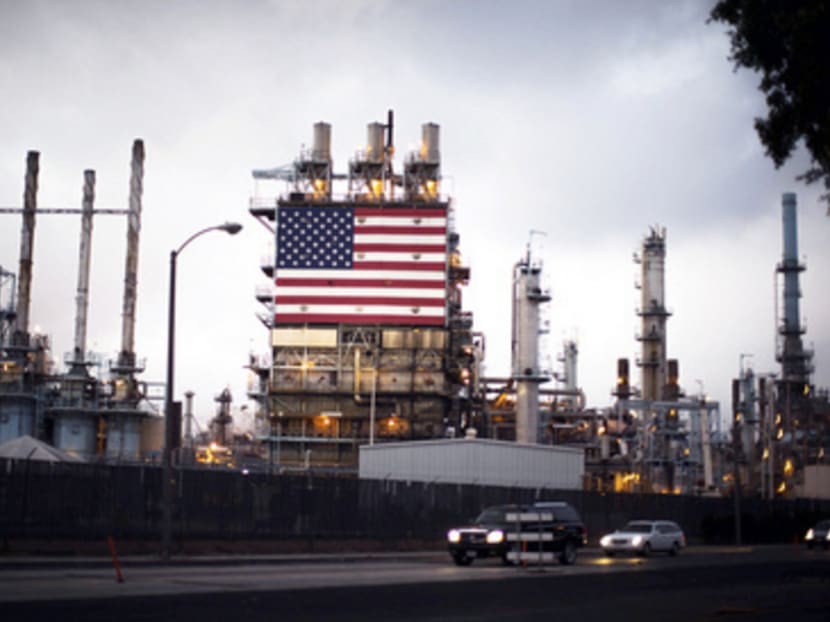OPEC’s decision to hold output signals clout of US oil
LONDON — The Organization of Petroleum Exporting Countries’ (OPEC) decision to cede no ground to rival producers underscored the price war in the crude market and the mounting challenge posed by United States shale drillers.

The Tesoro’s Los Angeles oil refinery in California. US oil production has risen to 9.077 million barrels a day, the highest level in weekly data from the Energy Information Administration going back to 1983. PHOTO: REUTERS
LONDON — The Organization of Petroleum Exporting Countries’ (OPEC) decision to cede no ground to rival producers underscored the price war in the crude market and the mounting challenge posed by United States shale drillers.
The 12-nation OPEC kept its output target unchanged even after the steepest slump in oil prices since the global recession, prompting speculation it has abandoned its role as a swing producer.
“We are entering a new era for oil prices, where the market itself will manage supply, no longer Saudi Arabia and OPEC,” said Mr Mike Wittner, the head of oil research at Societe Generale. “It’s huge. This is a signal that they’re throwing in the towel. The markets have changed for many years to come.”
The fracking boom has driven US output to the highest in three decades, contributing to a global surplus that OPEC member Venezuela on Thursday estimated at two million barrels a day, more than the production of five OPEC members.
Demand for the group’s crude will fall every year until 2017 as US supply expands, eroding its share of the global market to the lowest in more than a quarter century, said the group’s own estimates.
US oil production has risen to 9.077 million barrels a day, the highest level in weekly data from the Energy Information Administration going back to 1983. Output will climb to 9.4 million next year, the most since 1972, it forecasts.
Benchmark Brent crude fell the most in more than three years after OPEC’s decision, sliding 6.7 per cent to close at US$72.58 (S$94.65) a barrel. It fell 0.5 per cent to US$72.25 as at 5.52 pm Singapore time yesterday.
Prices peaked this year at US$115.71 in June.
“We will produce 30 million barrels a day for the next six months and we will watch to see how the market behaves,” OPEC secretary-general Abdalla Badri told reporters in Vienna after the meeting. “We are not sending any signals to anybody, we just try to have a fair price.”
OPEC pumped 30.97 million barrels a day in October, showed data compiled by Bloomberg.
The group has exceeded its current output ceiling in all but four of the 34 months since it was implemented, the data showed.
“OPEC has chosen to abdicate its role as a swing producer, leaving it to the market to decide what the oil price should be,” Mr Harry Tchilinguirian, head of commodity markets at BNP Paribas, said. “It wouldn’t be surprising if Brent starts testing US$70.”
Conventional oil producers in OPEC can no longer dictate prices, United Arab Emirates Energy Minister Suhail Mazrouei said in an interview in Vienna on Wednesday.
Newcomers to the market who have the highest costs and created the glut should be the ones to determine the price, he said.
“That is what OPEC is hoping for,” Mr Carsten Fritsch, a commodity analyst at Commerzbank, said in an email. “It’s the question of who will blink first.”
The boom in the US has been driven by a combination of horizontal drilling and hydraulic fracturing, which has unlocked supplies from shale formations, including the Bakken in North Dakota and the Eagle Ford in Texas.
The technique is typically more expensive than pumping from reservoirs. Some US producers need more than US$80 to break even and output growth will start to slow with prices below that level, Sanford C Bernstein & Co said in a report.
OPEC’s policy will spur a crash in the US shale industry, Mr Leonid Fedun, a vice-president and board member at OAO Lukoil, Russia’s second-largest oil producer, said in an interview before the group’s decision.
“In 2016, when OPEC completes this objective of cleaning up the American marginal market, the oil price will start growing again,” said Mr Fedun. “The shale boom is on a par with the dot-com boom. The strong players will remain, the weak ones will vanish.”
Mr Miswin Mahesh, a commodities analyst at Barclays, thinks otherwise.
“OPEC’s decision means it is over to you America,” he said in an email.
“This opens the window for the US to be the new swing producer.” BLOOMBERG





